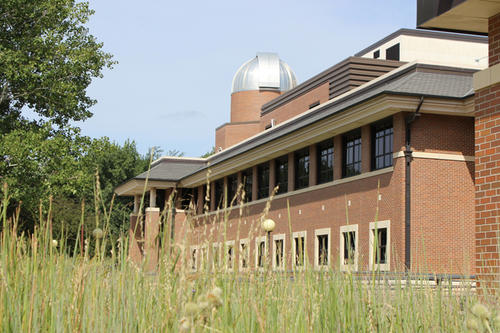
Carbohydrates (sugars) are everywhere—from our food to making up our clothes and coating every one of our cells. Carbohydrates can also be found on bacteria and viruses. In this review article published in Chemical Reviews, University of Minnesota Morris and Bates College professors help educators find and implement experiments to better teach their students about the impacts of carbohydrates in our lives.
Many students are already familiar with carbohydrates in the context of nutrition, food science and diabetes, which provides relevance to the real world. Carbohydrates are nontoxic, generally inexpensive, low waste, and often easy to purify. With many years of study, experiments involving carbohydrates are reliable.
The researchers examined and summarized existing literature from many different scientific journals for relevant topics regarding carbohydrates in high school and several levels of college chemistry. Their aim was to highlight the current state of laboratory educational topics in the literature and where improvements could be made in the future.
According to the researchers, since carbohydrate chemistry has not been the subject of a review to date, they limited the review to experiments published since 2000, based upon a desire to incorporate modern experiments that include the most advanced instrumentation. Not only are carbohydrates an important class of compounds to understand; they also provide excellent teaching opportunities in the gamut of undergraduate (or high school) chemistry courses.
“Carbohydrates are everywhere around us but are not represented with a proportional frequency in chemical education,” said Alyssa Pirinelli, an assistant professor at the University of Minnesota Morris Division of Science and Mathematics, and review co-author. “This review highlights where the current field is with respect to how we teach about sugars to the upcoming generations. We need to up our game when it comes to talking about carbohydrates.”
Many carbohydrate experiments may be performed in a three hour time block required of the teaching laboratory, but are also stable for extended periods that can span multi-week experiments. In addition, analysis of carbohydrates—glucose in particular—may be easily performed using inexpensive commercially available blood glucose monitors.
“I conducted carbohydrate research in graduate school and got to know about the synthesis and usage of carbohydrates in a chemical and biochemical sense,” said Pirinelli. “However, I realized that I had learned very little about them in my own classes, despite them being so important and found everywhere. I hope this review will help educators better understand the subject of teaching carbohydrates as well.”
Support for the review was provided by the American Chemical Society.
About University of Minnesota Morris
One of five campuses that comprise the University of Minnesota System, the University of Minnesota Morris is a public liberal arts college where students work closely with faculty and mentors to shape an education that prepares them for challenging graduate programs, productive careers, and deep civic engagement. Learn more at morris.umn.edu.
- Categories:
- Science and Technology





